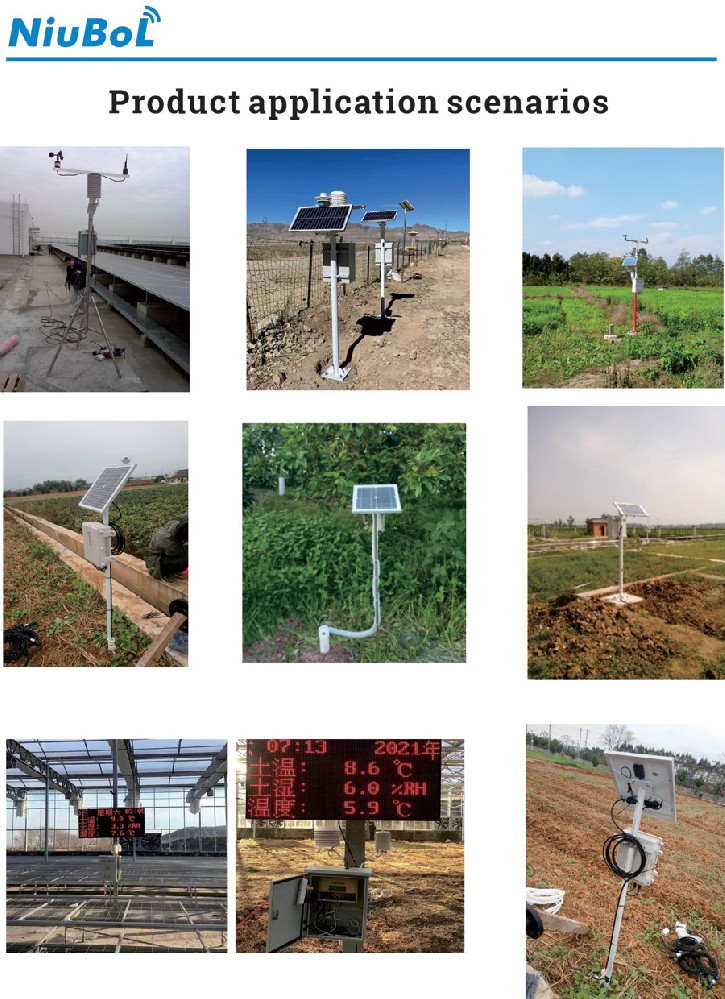

— Blogs —
—Products—
 Consumer hotline +8618073152920
Consumer hotline +8618073152920 WhatsApp:+8615367865107
Address:Room 102, District D, Houhu Industrial Park, Yuelu District, Changsha City, Hunan Province, China
Product knowledge
Time:2024-01-01 11:47:21 Popularity:8197
Smart agriculture refers to the intelligent, automated and refined management of the agricultural production process through the combination of information technology, the Internet, the Internet of Things, big data, artificial intelligence and other modern technologies with agricultural production. The goal of smart agriculture is to improve the efficiency of agricultural production, reduce production costs, ensure the quality and safety of agricultural products, and promote the sustainable development of agriculture.
Intelligent agriculture can real-time collection of greenhouse temperature, soil temperature, CO2 concentration, humidity signals and light, leaf surface humidity, dew point temperature and other environmental parameters, automatically open or close the specified equipment. It can be processed at any time according to the user's needs, providing a scientific basis for automatic monitoring of comprehensive ecological information for facility agriculture, automatic control of the environment and intelligent management.
 |  |  |  |  |
| Anemometer Wind Speed sensor | Wind direction sensor | Tipping bucket rain gauge sensor | Tipping bucket rain gauge sensor | Piezoelectric Rain Gauge |
 |  |  |  |  |
| Atmospheric Temperature Humidity air pressure Sensor | ultrasonic wind speed and direction sensor | 5 in1 Ultrasonic Weather Station Sensor | 6 in1 Ultrasonic Weather Station Sensor | 7 in1 Ultrasonic Weather Station Sensor |
 |  |  |  |  |
| Solar Radiation Sensor | Solar Radiation Sensor | Photosynthetically Active Radiation Sensor; | illumination sensor | Ultrasonic Snow Depth Sensor |
 |  |  |  |  |
| Noise measurement sensor | Carbon dioxide(CO2) sensor | PM2.5 and PM10 sensors | Visibility sensors | Soil Moisture Temperature sensor |
Smart farming relies heavily on various sensors to monitor and optimize agricultural practices. Here are Top 10 commonly used sensors in smart farming:
1. Soil Moisture Sensors: These sensors measure the moisture content in the soil, providing real-time data to farmers. This helps in efficient irrigation management, preventing over or under-watering of crops.
2. Weather Sensors: Weather sensors collect data on temperature, humidity, wind speed, rainfall, and solar radiation. This information aids in predicting weather patterns and adjusting farming practices accordingly.
3. Crop Health Sensors: These sensors monitor various parameters like chlorophyll content, leaf temperature, and plant stress levels. By detecting early signs of disease, nutrient deficiencies, or pest infestations, farmers can take timely actions to protect their crops.
4. pH Sensors: pH sensors measure the acidity or alkalinity of the soil. Maintaining the correct pH level is crucial for optimal nutrient uptake by plants. These sensors help farmers adjust soil pH and ensure proper crop growth.
5. Light Sensors: Light sensors monitor the light intensity and quality received by crops. This information enables farmers to optimize artificial lighting in indoor farming or adjust planting locations for better sunlight exposure.
6. Crop Yield Sensors: These sensors estimate crop yield by measuring factors such as plant height, canopy density, and fruit/vegetable size. This data assists farmers in planning harvest schedules and predicting market supply.
7. wind speed sensors: wind speed sensors are used to measure the strength and direction of the wind. This is useful for setting up sprinkler irrigation systems, preventing wind damage, and adjusting greenhouse ventilation. 4.
8. Water quality sensor: Water quality sensors are used to monitor the quality of irrigation water, including indicators such as pH, conductivity, and dissolved oxygen. This is essential to ensure the quality of irrigation water and reduce soil salinity and chemical buildup.
9. CO2 sensors: CO2 sensors are used to measure the concentration of CO2 in a greenhouse or indoor agricultural environment. This data can help farmers optimize greenhouse ventilation and CO2 fertilization to improve photosynthetic efficiency.
10. Level Sensors: Level sensors are used to monitor water levels in pools, tanks or irrigation systems. This helps to ensure that the irrigation system is functioning properly, avoiding water wastage and crop water shortages.

Smart farming uses sensors to gather real-time data on environmental conditions and crop health, enabling farmers to make informed decisions that optimize production and reduce risks. The use of these sensors enables farmers to monitor the farm environment in real time and manage it accurately, thereby improving crop yield and quality, reducing production costs and realizing sustainable agriculture.
Related recommendations
Sensors & Weather Stations Catalog
Agriculture Sensors and Weather Stations Catalog-NiuBoL.pdf
Weather Stations Catalog-NiuBoL.pdf
Related products
 Combined air temperature and relative humidity sensor
Combined air temperature and relative humidity sensor Soil Moisture Temperature sensor for irrigation
Soil Moisture Temperature sensor for irrigation Soil pH sensor RS485 soil Testing instrument soil ph meter for agriculture
Soil pH sensor RS485 soil Testing instrument soil ph meter for agriculture Wind Speed sensor Output Modbus/RS485/Analog/0-5V/4-20mA
Wind Speed sensor Output Modbus/RS485/Analog/0-5V/4-20mA Tipping bucket rain gauge for weather monitoring auto rainfall sensor RS485/Outdoor/stainless steel
Tipping bucket rain gauge for weather monitoring auto rainfall sensor RS485/Outdoor/stainless steel Pyranometer Solar Radiation Sensor 4-20mA/RS485
Pyranometer Solar Radiation Sensor 4-20mA/RS485
Screenshot, WhatsApp to identify the QR code
WhatsApp number:+8615367865107
(Click on WhatsApp to copy and add friends)